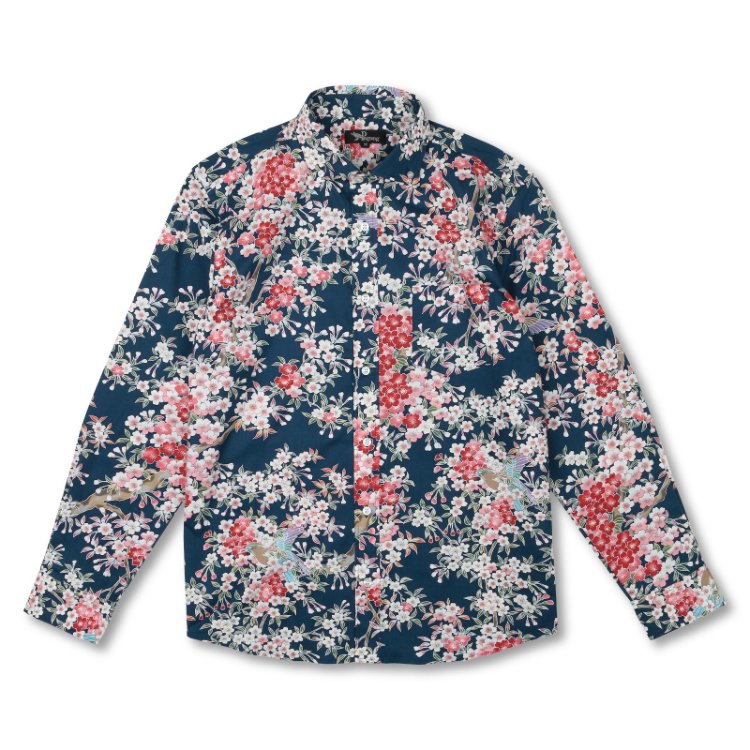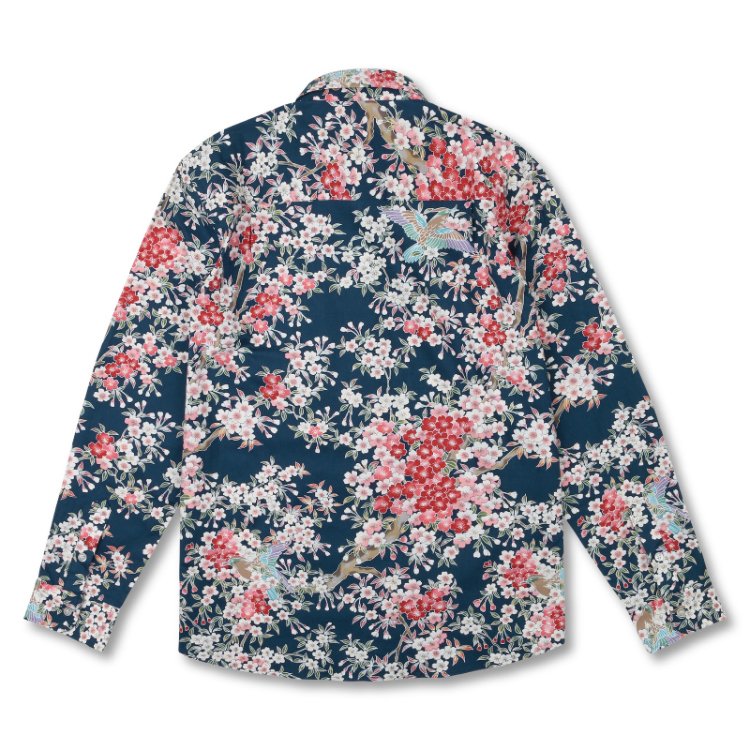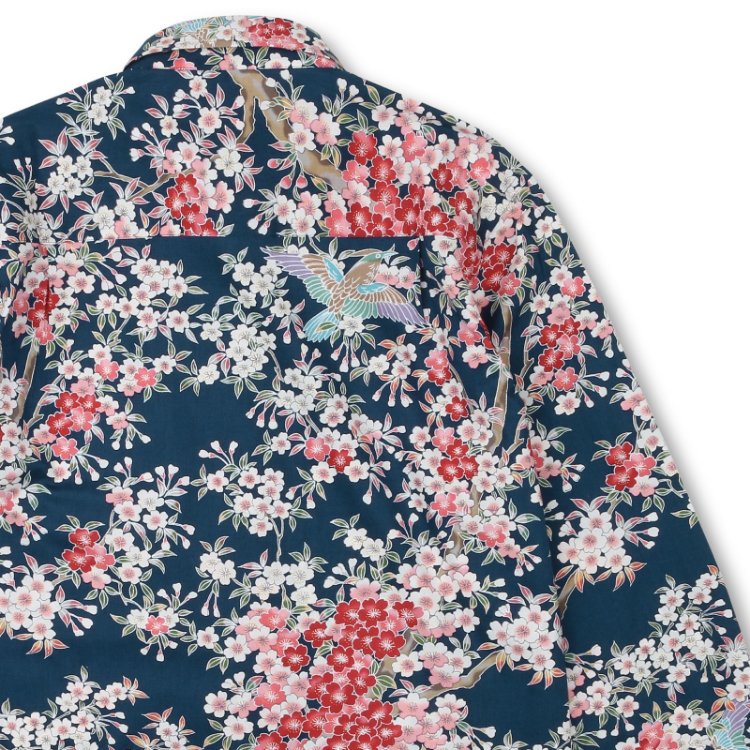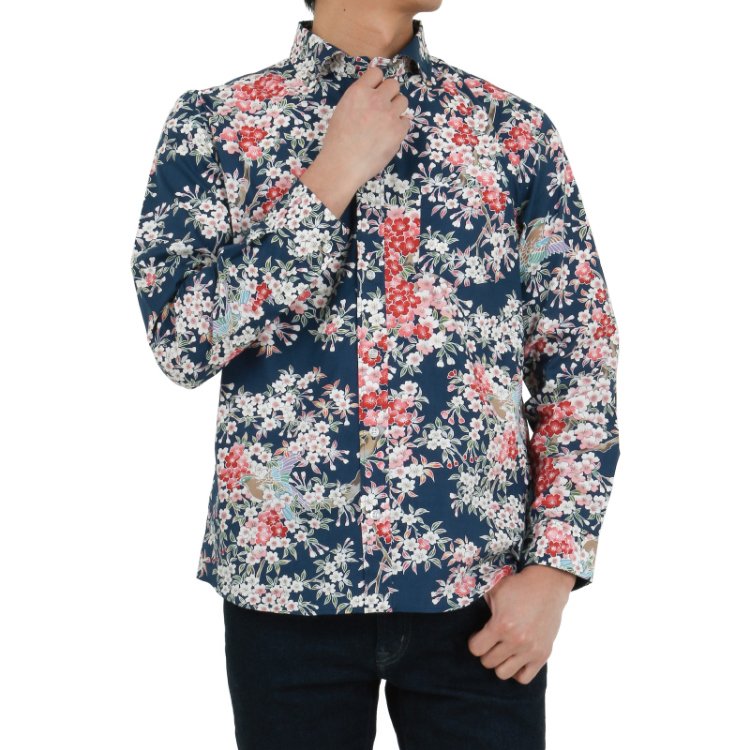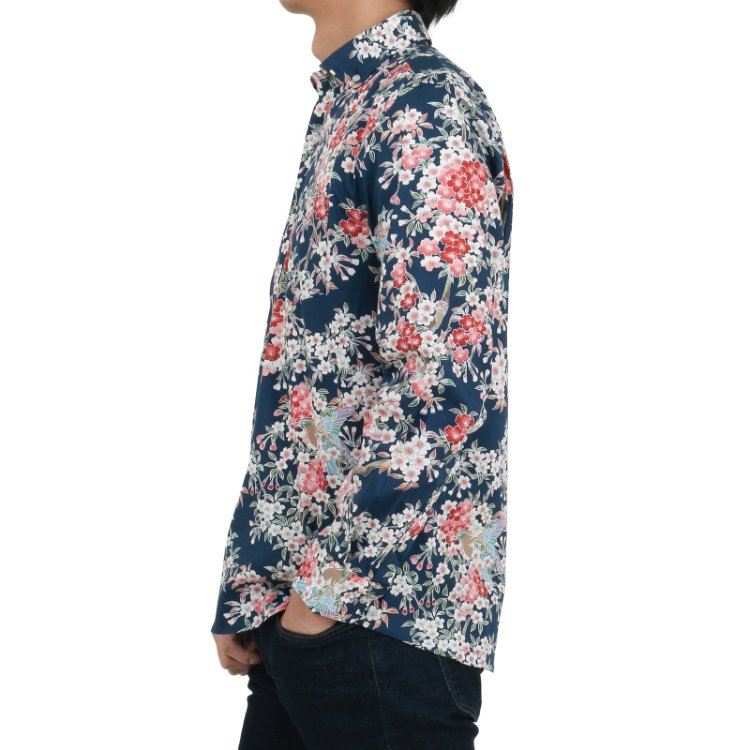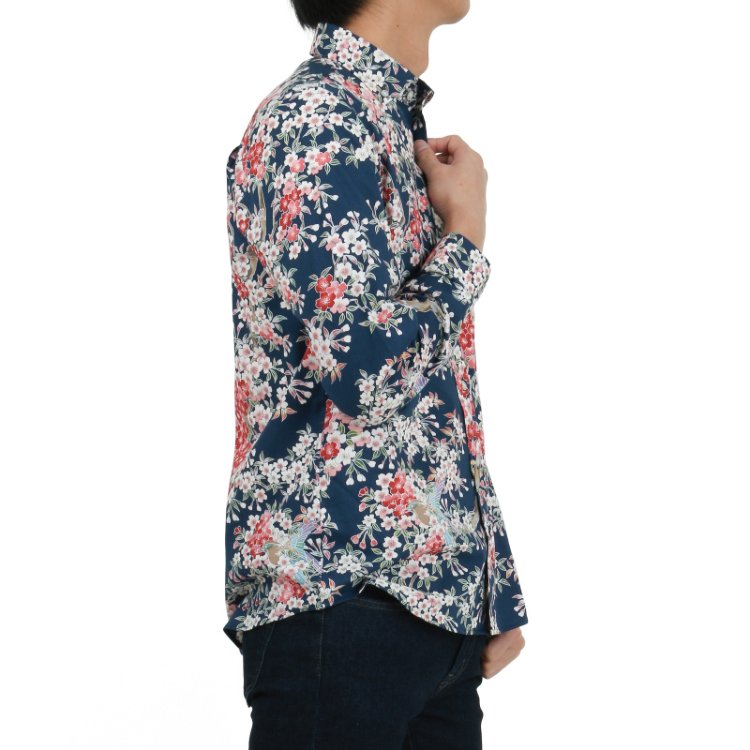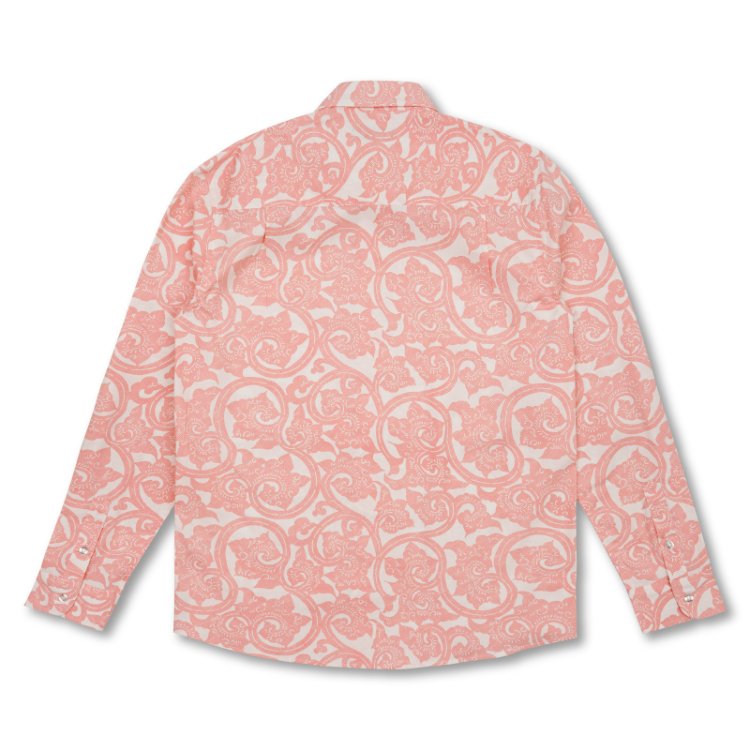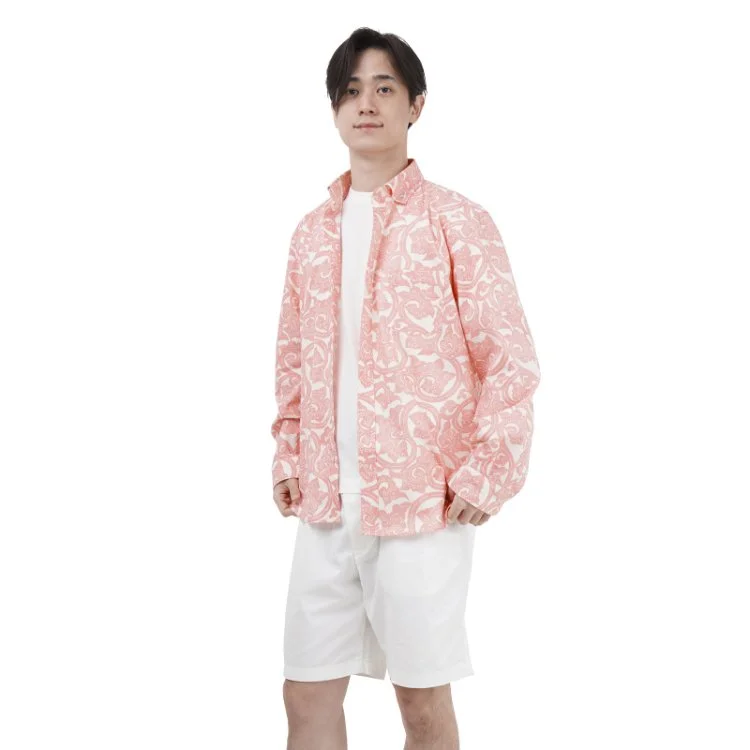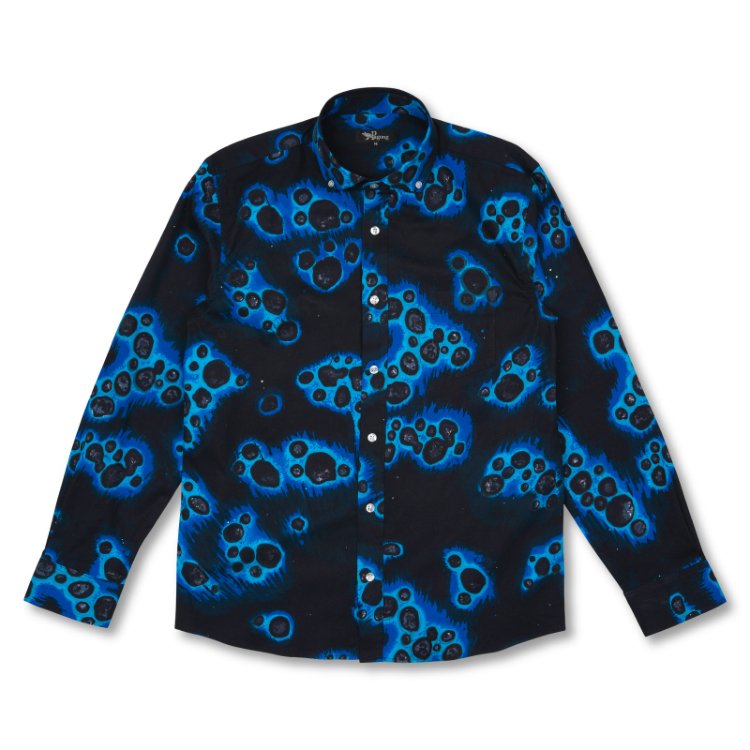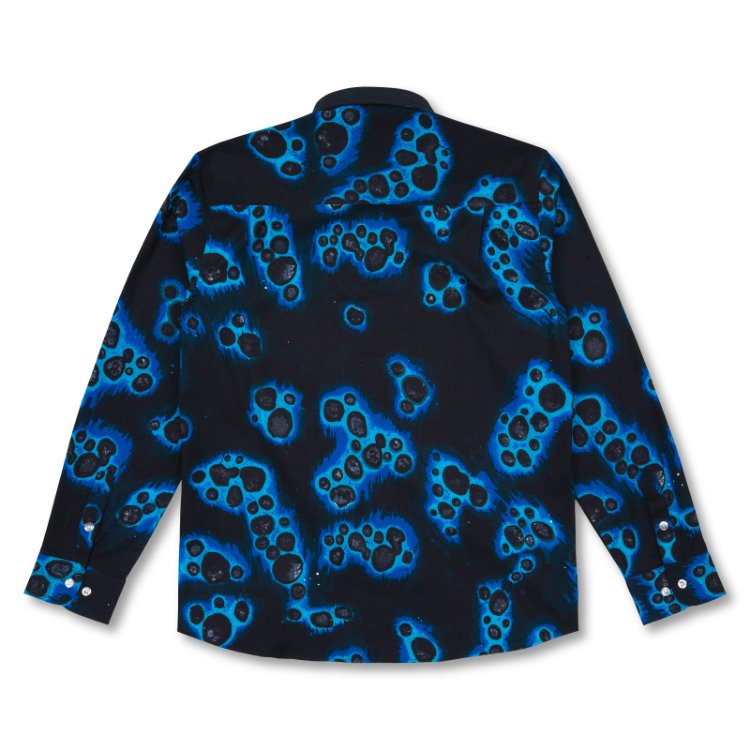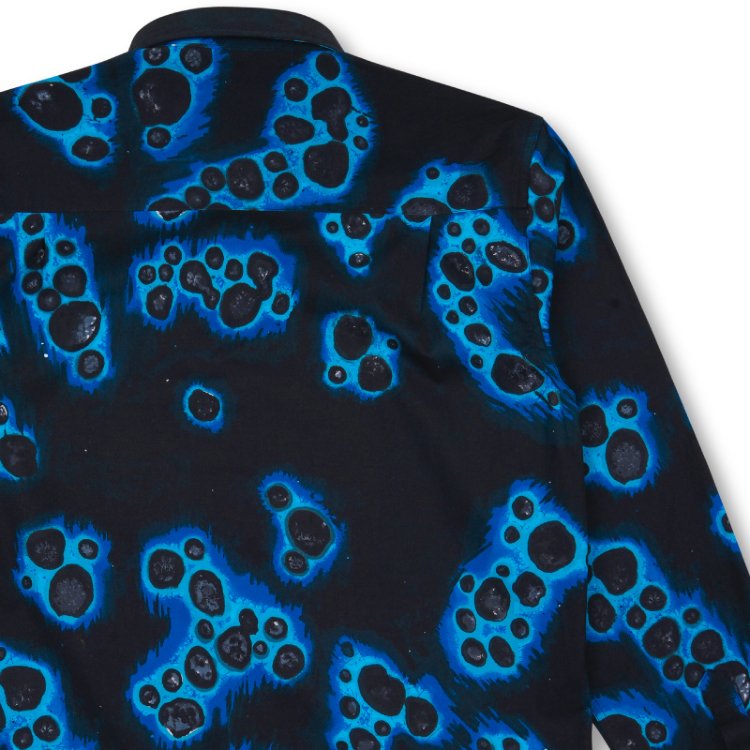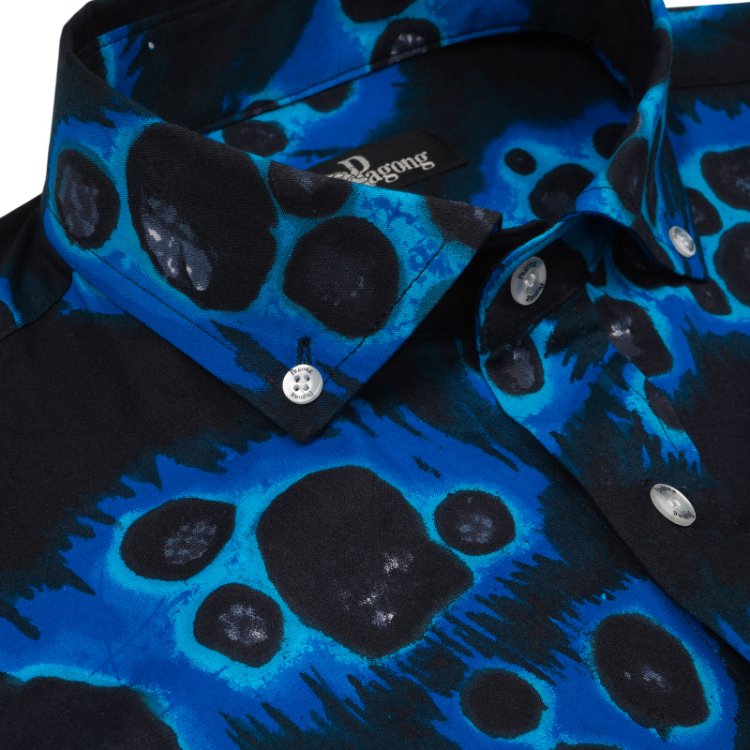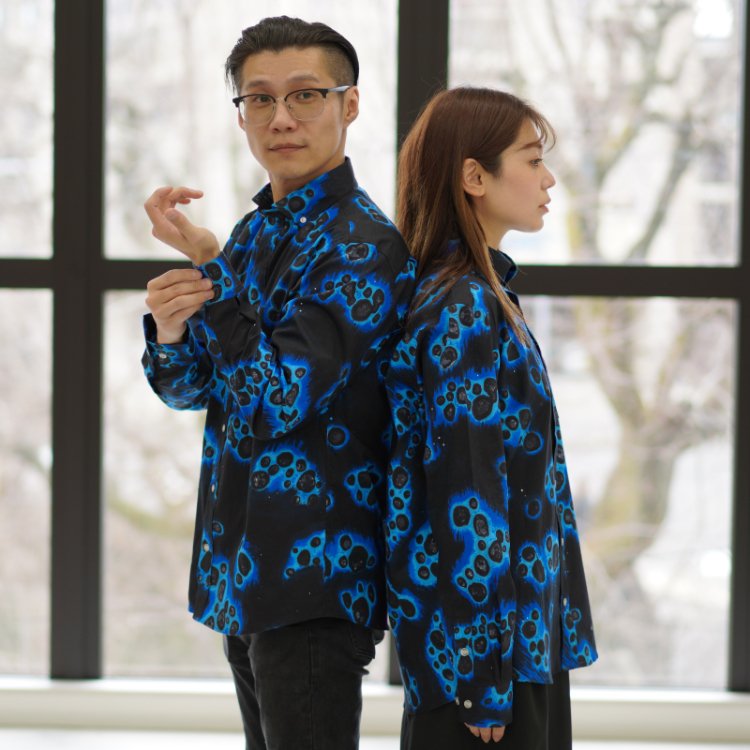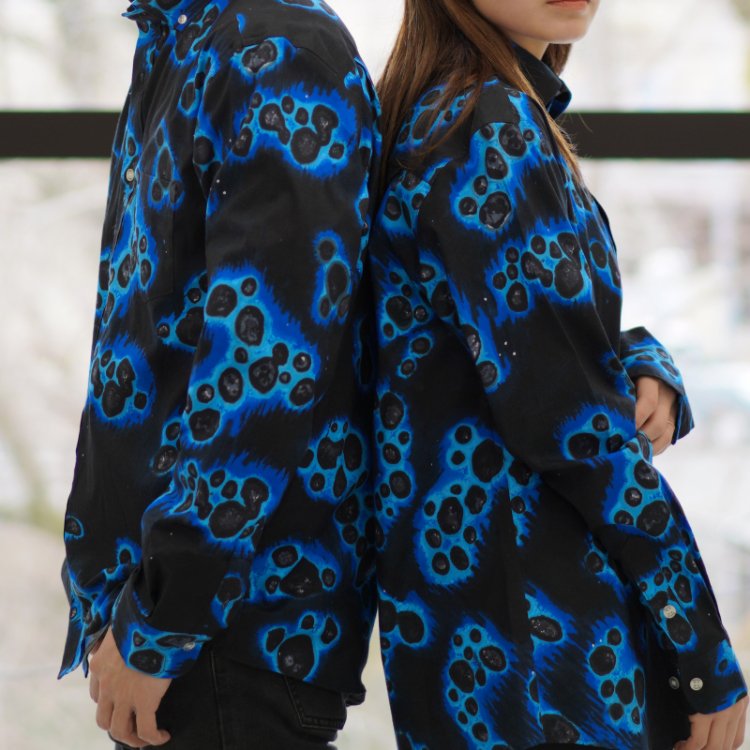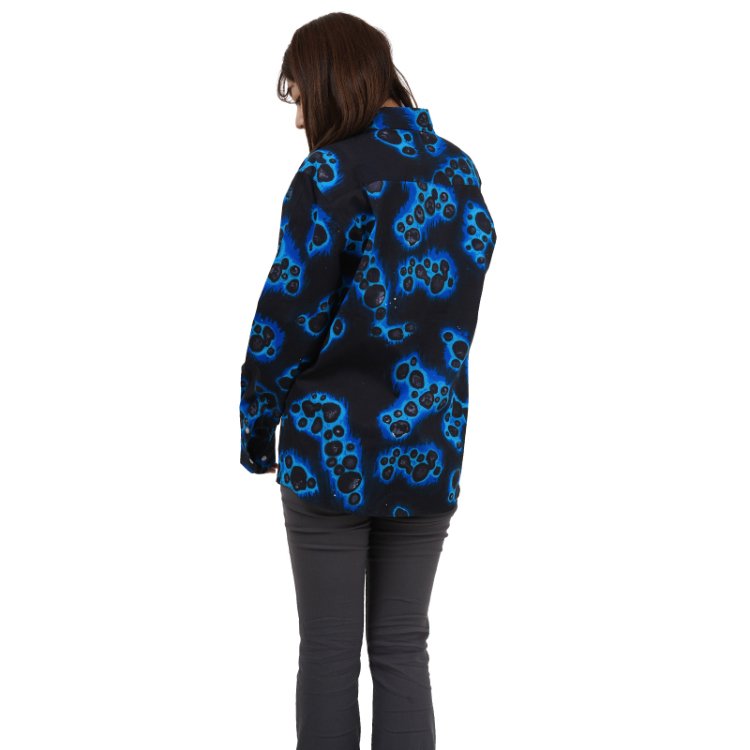 Image 1 of 7
Image 1 of 7

 Image 2 of 7
Image 2 of 7

 Image 3 of 7
Image 3 of 7

 Image 4 of 7
Image 4 of 7

 Image 5 of 7
Image 5 of 7

 Image 6 of 7
Image 6 of 7

 Image 7 of 7
Image 7 of 7








Kiredorimoyo Short Sleeve Button Down Shirt
Color / White, Yellow and Blue Care Instruction
Japanese name/ 裂取模様 ( Kiredorimoyo)
-About-
This text highlights a variety of kimono designs dyed by the Kameda Tomizome Factory during the Showa era. A key feature of this pattern is its patchwork-like appearance, known as "kiredori," which refers to fragments of old textiles. These beautiful and rare textiles were often held by esteemed families, shrines, and temples.
When exquisite kosode (short-sleeved kimonos) were lost in a fire during the Edo period, fabric from these fragments was repurposed into simple kosode, giving rise to the term "kiredori."
The pattern blends clearly divided backgrounds with soft blurring techniques, merging a sharp design with the gentle aesthetics typical of women's kimonos. Seasonal flowers add charm, while images of folding screens and imperial carriages evoke admiration for the dynasty's culture. Auspicious patterns, such as basket weave and hemp leaf designs, symbolize protection against evil, and the depiction of mandarin ducks as a "lovey-dovey couple" wishes for marital harmony.
・98% Cotton 2% Polyurethane
・Made in Japan
・Urban style
・Button-down
・Hand-wash gently
・Currency : US Dollar (USD)
Color / White, Yellow and Blue Care Instruction
Japanese name/ 裂取模様 ( Kiredorimoyo)
-About-
This text highlights a variety of kimono designs dyed by the Kameda Tomizome Factory during the Showa era. A key feature of this pattern is its patchwork-like appearance, known as "kiredori," which refers to fragments of old textiles. These beautiful and rare textiles were often held by esteemed families, shrines, and temples.
When exquisite kosode (short-sleeved kimonos) were lost in a fire during the Edo period, fabric from these fragments was repurposed into simple kosode, giving rise to the term "kiredori."
The pattern blends clearly divided backgrounds with soft blurring techniques, merging a sharp design with the gentle aesthetics typical of women's kimonos. Seasonal flowers add charm, while images of folding screens and imperial carriages evoke admiration for the dynasty's culture. Auspicious patterns, such as basket weave and hemp leaf designs, symbolize protection against evil, and the depiction of mandarin ducks as a "lovey-dovey couple" wishes for marital harmony.
・98% Cotton 2% Polyurethane
・Made in Japan
・Urban style
・Button-down
・Hand-wash gently
・Currency : US Dollar (USD)
Color / White, Yellow and Blue Care Instruction
Japanese name/ 裂取模様 ( Kiredorimoyo)
-About-
This text highlights a variety of kimono designs dyed by the Kameda Tomizome Factory during the Showa era. A key feature of this pattern is its patchwork-like appearance, known as "kiredori," which refers to fragments of old textiles. These beautiful and rare textiles were often held by esteemed families, shrines, and temples.
When exquisite kosode (short-sleeved kimonos) were lost in a fire during the Edo period, fabric from these fragments was repurposed into simple kosode, giving rise to the term "kiredori."
The pattern blends clearly divided backgrounds with soft blurring techniques, merging a sharp design with the gentle aesthetics typical of women's kimonos. Seasonal flowers add charm, while images of folding screens and imperial carriages evoke admiration for the dynasty's culture. Auspicious patterns, such as basket weave and hemp leaf designs, symbolize protection against evil, and the depiction of mandarin ducks as a "lovey-dovey couple" wishes for marital harmony.
・98% Cotton 2% Polyurethane
・Made in Japan
・Urban style
・Button-down
・Hand-wash gently
・Currency : US Dollar (USD)
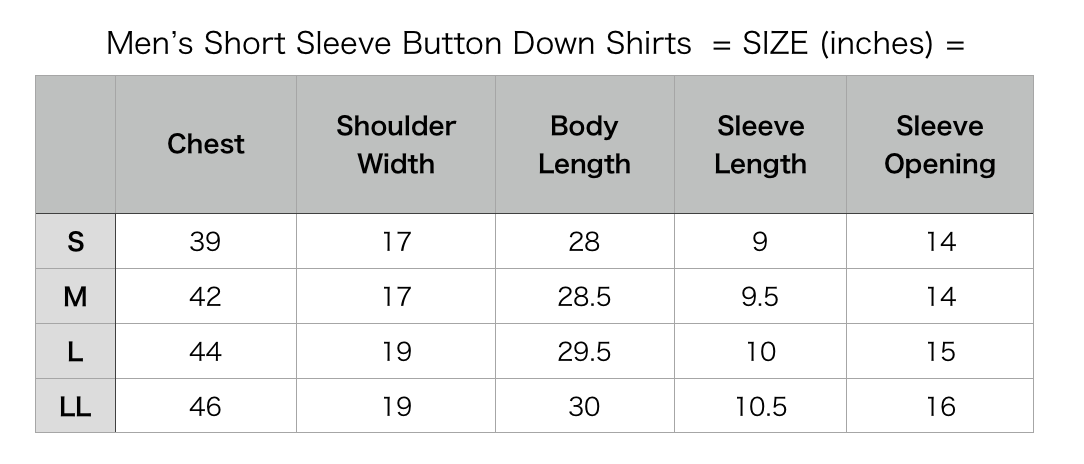
If there is anything we can help you with, please feel free to let us know.
MAIL to : Pagong Kyoto
Contact Form >> www.pagongkyoto.com/contact
















